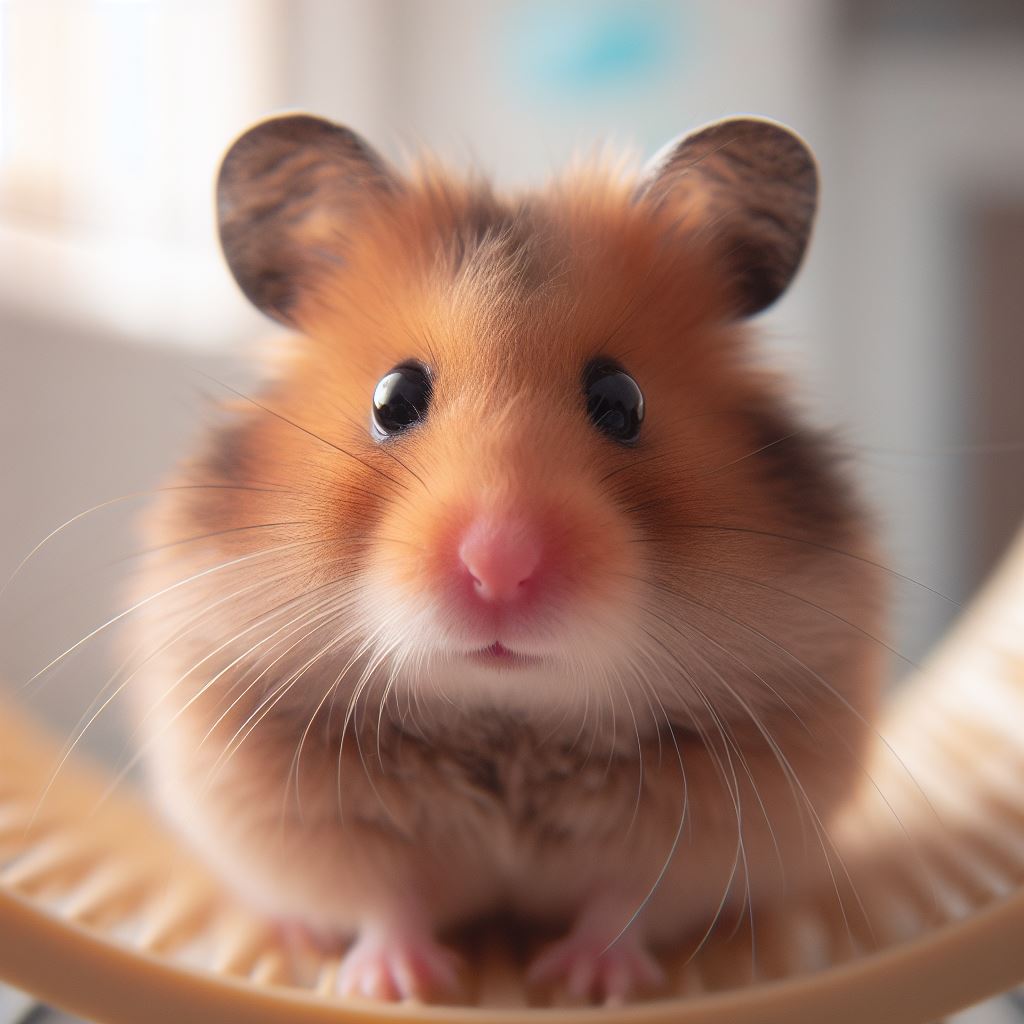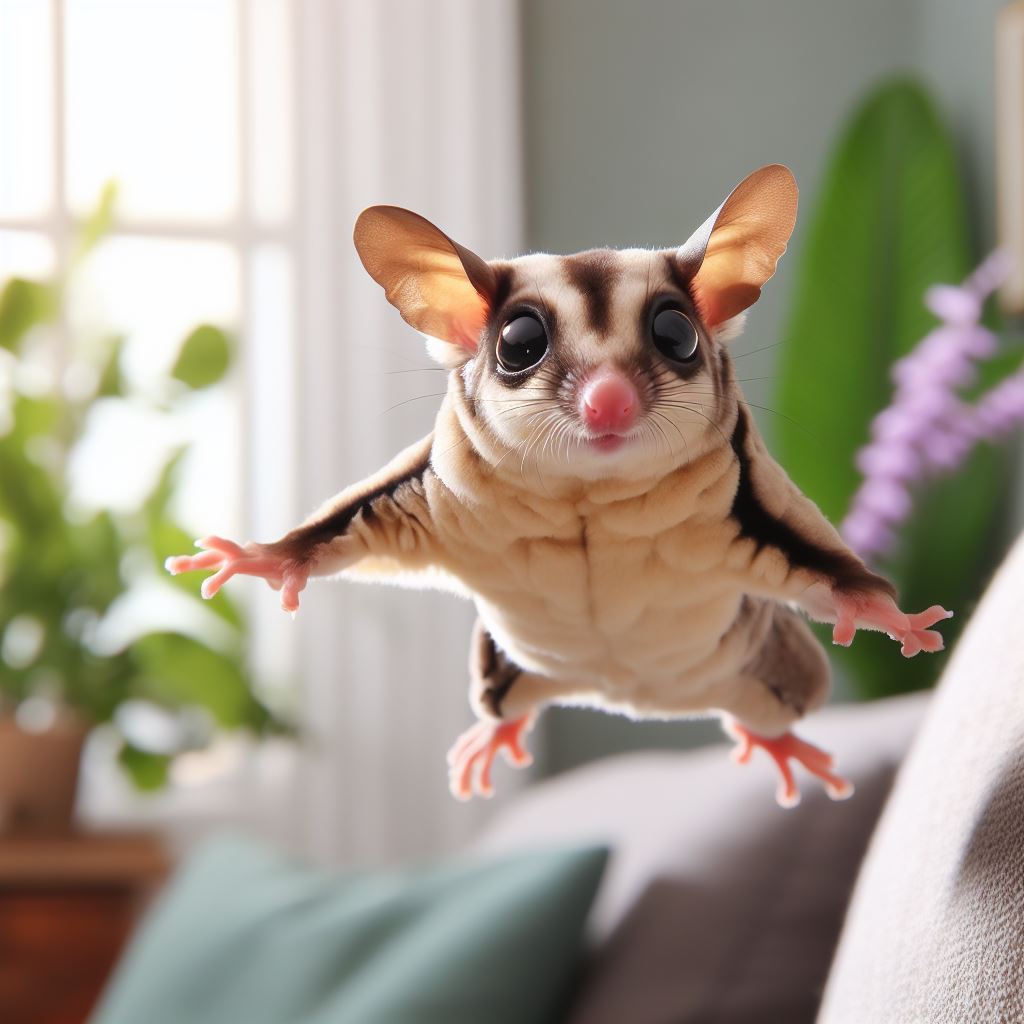Introduction to Hamsters
Hamsters, those adorable tiny creatures with their soft fur and twitchy noses, have become beloved pets around the world. These pocket-sized rodents belong to the Cricetidae family and are nocturnal animals, meaning they are most active during the night. Their popularity as pets can be attributed to their charming nature and relatively low maintenance. But before you decide to bring one home, there are some essential things you need to know.
Definition and Species Overview
Hamsters are small, stout-bodied rodents belonging to the Cricetidae family. They come in several species, but the most common ones kept as pets include the Syrian hamster, the dwarf hamster (which includes Campbell’s, Winter White, Roborovski, and Chinese hamsters), and the Roborovski hamster. Each species has its unique characteristics and temperaments, so it’s important to choose the one that fits your lifestyle best.
Popular Hamster Species as Pets
Syrian hamsters, also known as golden hamsters, are the largest and most popular pet hamsters. They are solitary creatures and must be housed alone to avoid conflicts. Dwarf hamsters, on the other hand, are social and can be kept in same-sex pairs or groups, depending on their species. Roborovski hamsters are the smallest and fastest of the dwarf hamsters, making them a popular choice for those who enjoy watching energetic pets.
Reasons for Choosing a Hamster as a Pet
Why do people choose hamsters as pets? Their small size makes them suitable for apartment living, and their nocturnal habits mean they’re awake and active when many people are home from work or school. Hamsters are also relatively inexpensive to care for, making them an accessible option for pet lovers on a budget.
Considerations Before Getting a Hamster
Before getting a hamster, it’s crucial to consider the time, effort, and resources required for their care. Hamsters have a lifespan of approximately 2 to 3 years, so be prepared for a long-term commitment. Additionally, their nocturnal nature might not be suitable for everyone, especially those with young children who go to bed early.
Selecting the Right Hamster
Different Hamster Breeds and Varieties
When it comes to hamsters, variety is the spice of life. Syrians are larger and more solitary, while dwarf hamsters come in different species, each with its unique traits. Campbell’s dwarf hamsters are known for their friendly nature, while Roborovski hamsters are incredibly active and need plenty of room to run and play.
Physical Characteristics and Traits
Hamsters come in an array of colors, from golden brown to snowy white, and some even have distinctive patterns. Their fur can be short or long, and their eyes are beady and bright. Understanding these physical traits can help you choose a hamster that matches your aesthetic preferences.
Choosing a Suitable Hamster for Your Lifestyle
Consider your lifestyle when choosing a hamster. If you have a busy schedule, a Syrian hamster might be the best choice due to their solitary nature. However, if you can provide plenty of interaction and playtime, a pair of dwarf hamsters might be a delightful addition to your home.
Where to Adopt or Buy a Hamster
You can find hamsters in local pet stores, but consider adopting from animal shelters or rescue organizations. Adopting not only gives a home to a pet in need but also encourages responsible pet ownership.
Setting Up the Perfect Habitat
Selecting an Appropriate Hamster Cage
A spacious and well-ventilated cage is essential for your hamster’s well-being. Wire cages with narrow gaps are suitable as they provide proper ventilation and prevent escapes. Avoid aquariums as they lack ventilation, which can lead to respiratory problems.
Cage Size and Space Requirements
Hamsters need ample space to roam and explore. For Syrian hamsters, a cage size of at least 24 inches by 12 inches is recommended, while dwarf hamsters can thrive in slightly smaller enclosures. A larger cage allows for the inclusion of various toys and activities, promoting physical and mental exercise.
Bedding Options and Substrates
Soft bedding is vital for hamsters, as it provides a comfortable surface for them to rest and burrow in. Aspen shavings or paper-based bedding are excellent choices, as they are safe and absorbent. Avoid cedar or pine shavings, as the aromatic oils can be harmful to hamsters.
Creating a Comfortable Nesting Area
Hamsters love to create cozy nests. Provide nesting material like shredded paper or hay, allowing your pet to construct a warm and secure hideout. This not only serves as a sleeping area but also fulfills their instinct to burrow and nest.
Essential Cage Accessories (Wheel, Hideouts, Toys)
Hamsters are active creatures that require mental and physical stimulation. A solid exercise wheel is a must-have, ensuring they get the necessary physical activity. Additionally, provide hideouts and tunnels for them to explore, along with chew toys to keep their teeth healthy and prevent boredom.
Remember, providing a stimulating environment is key to a happy and healthy hamster. In the next section, we’ll delve into their dietary needs, so stay tuned for more tips on how to care for your furry friend!
Proper Nutrition and Diet
Understanding Hamster Dietary Needs
A well-balanced diet is crucial for your hamster’s overall health. Hamsters are omnivores, meaning they need a mix of high-quality hamster pellets, fresh fruits, vegetables, and proteins. Make sure to choose a hamster food that is specifically formulated to meet their nutritional requirements. Consult your veterinarian for recommendations on the best brands and types of food suitable for your hamster’s breed.
Commercial Hamster Food vs. Homemade Diets
While commercial hamster food provides essential nutrients, supplementing their diet with fresh foods is beneficial. Fresh fruits like apples, carrots, and broccoli, as well as small amounts of lean protein such as cooked chicken, can be offered as occasional treats. Avoid sugary or salty foods, as hamsters are prone to diabetes and other health issues related to poor diet.
Fresh Fruits, Vegetables, and Treats
Incorporating a variety of fresh fruits and vegetables into their diet not only provides essential vitamins but also enriches their palate. Just be mindful of portion sizes; hamsters have tiny stomachs, so small amounts of treats go a long way. Always remove uneaten fresh food to prevent spoilage and keep their living area clean.
Importance of Clean, Fresh Water
Fresh, clean water is vital for your hamster’s hydration. Provide water in a sturdy, spill-proof bottle attached to the cage, ensuring it is accessible at all times. Regularly check the water supply to guarantee your pet always has access to fresh water, which is especially crucial in warm weather.
Foods to Avoid
Certain foods can be harmful to hamsters, including chocolate, caffeine, almonds, onions, and garlic. These items are toxic and should never be given to your pet. Also, avoid feeding them sticky or sugary foods, as hamsters are prone to dental problems, and sugary treats can lead to obesity and diabetes.
Ensuring Optimal Health and Wellness
Just like any other pet, hamsters require regular veterinary check-ups to monitor their health. Routine visits can help detect early signs of illness, ensuring prompt treatment. Find a veterinarian experienced in exotic animals, including hamsters, to provide the best possible care for your pet.
Common Health Issues in Hamsters
Hamsters can suffer from a variety of health issues, including respiratory infections, dental problems, and skin conditions. Keep an eye out for signs of illness, such as changes in behavior, decreased appetite, or labored breathing. If you notice any unusual symptoms, consult your veterinarian immediately.
Signs of a Healthy Hamster
A healthy hamster is active, curious, and has a good appetite. Their fur should be clean and shiny, and their eyes should be bright and clear. Regular grooming and providing a clean environment contribute significantly to their overall well-being.
Bathing and Grooming Tips
Hamsters are meticulous groomers and rarely require baths. However, if your hamster gets into something sticky or dirty, you can offer a sand bath. Provide a shallow dish filled with chinchilla sand, allowing them to roll and clean themselves. Regularly clean and replace the sand to maintain hygiene.
Exercise and Mental Stimulation
Physical activity and mental stimulation are essential for hamsters. Provide an exercise wheel for them to run on, and rotate toys regularly to prevent boredom. Additionally, hiding treats in their cage or providing puzzle feeders can engage their minds and keep them entertained.
Proper exercise and mental stimulation not only keep your hamster physically fit but also prevent behavioral issues. In the next section, we will explore how to handle and socialize with your hamster effectively, ensuring a strong bond between you and your new companion! Stay tuned for valuable tips on building trust and understanding your hamster’s body language.
Hamster Handling and Socializing
Proper Handling Techniques
Hamsters are naturally skittish, so gentle and patient handling is essential to build trust. Begin by allowing your hamster to get used to your presence. Place your hand in their cage, letting them approach you on their terms. When they feel comfortable, gently scoop them up, supporting their body, and avoid sudden movements. Always handle your hamster close to the ground to prevent accidental falls.
Building Trust with Your Hamster
Building trust takes time and consistency. Spend time near their cage, talking to them in a calm, soothing voice. Offer treats from your hand, allowing them to associate your presence with positive experiences. Avoid sudden noises or movements that might startle them, as trust is easily broken in these delicate creatures.
Socialization with Humans and Other Pets
While hamsters enjoy human interaction, they should be kept away from other household pets, such as cats and dogs. Even if your other pets are well-behaved, the natural hunting instincts of larger animals can pose a significant threat to your small hamster. Always supervise interactions and ensure your hamster’s safety.
Understanding Hamster Body Language
Hamsters communicate a lot through body language. A relaxed hamster will have a slightly arched back and groom themselves regularly. If they stand on their hind legs and stretch, they’re curious. However, if they puff up, it’s a sign of fear. Learn to recognize these cues to understand your pet’s feelings and create a comfortable environment for them.
Reproduction and Breeding
Understanding Hamster Reproductive Behavior
Hamsters reach sexual maturity early, with some species capable of reproducing as young as 4 to 5 weeks old. If you have both male and female hamsters, it’s crucial to separate them at this age to prevent unintended litter. Hamster pregnancies last around 18 to 22 days, after which the mother will give birth to a litter of tiny, hairless pups.
Responsible Breeding Practices
Breeding hamsters should be approached responsibly and ethically. Breeding should only be done by knowledgeable and reputable breeders who prioritize the health and well-being of the animals. Overbreeding can lead to various health issues and is detrimental to the hamster population as a whole.
Caring for Pregnant Hamsters and Newborns
Pregnant hamsters require extra care and nutrition. Provide a well-balanced diet and a comfortable, quiet nesting area. Handle the babies minimally during the first two weeks, allowing the mother to care for them without disruption. Ensure the cage is secure to prevent escapes and disturbances.
Avoiding Unplanned Litters
Preventing unplanned litter is crucial in responsible hamster ownership. Always house hamsters of the same sex separately unless you intend to breed them responsibly and have the knowledge and resources to care for the offspring. Spaying and neutering are options to consider if you want to prevent accidental pregnancies.
Understanding your hamster’s reproductive behavior and practicing responsible breeding ensures the well-being of both the parents and the offspring. In the next section, we will explore ways to enrich your hamster’s life through toys, activities, and mental stimulation. Stay tuned for creative ideas to keep your furry friend entertained!
Enrichment and Entertainment
DIY Hamster Toys and Games
Creating homemade toys can be a fun and budget-friendly way to enrich your hamster’s environment. Cardboard tubes, small boxes, and shredded newspaper make excellent nesting materials and toys. You can also make a maze using cardboard, providing mental stimulation and exercise as your hamster explores its way through the maze.
Providing Mental Stimulation
Hamsters are intelligent creatures that need mental stimulation to thrive. Puzzle feeders and treat-dispensing toys encourage problem-solving skills. Additionally, rotating toys in their cage regularly prevents boredom. Introduce new items and rearrange their habitat to keep their environment engaging and exciting.
Rotating Toys to Prevent Boredom
Hamsters can get bored with their surroundings, so introducing novelty keeps them mentally engaged. Periodically swap out toys, hide treats in different places, or change the layout of their habitat. These simple changes provide mental challenges and prevent your pet from becoming lethargic due to monotony.
Exercise Activities and Playtime
Apart from the wheel in their cage, hamsters benefit from supervised playtime outside their habitat. Use a secure playpen or a safe, enclosed area to let your hamster explore. Offer tunnels to crawl through, small obstacles to climb, and toys to interact with. Always supervise playtime to ensure their safety and prevent them from hiding in hard-to-reach places.
Maintaining Cleanliness
Maintaining a clean Hamster habitat is essential for your hamster’s health. Clean the cage at least once a week, removing soiled bedding, uneaten food, and dirty water. Wash the cage and accessories with mild soap and water, avoiding strong chemicals that could harm your pet. Regular cleaning prevents the buildup of bacteria and keeps your hamster healthy.
Proper Litter Training Techniques
Hamsters typically choose one corner of their cage as their bathroom spot. Place a small litter box filled with hamster-safe bedding in that corner to encourage litter training. Be patient, as it might take some time for them to adjust. Clean the litter box regularly to maintain hygiene.
Dealing with Odors
Proper cleaning and regular cage maintenance significantly reduce odors. Use odor-neutralizing bedding and change it frequently. Wash the wheel and toys regularly, as these can trap odors. Avoid using scented products, as hamsters have sensitive respiratory systems, and strong fragrances can be harmful.
Preventing and Managing Allergies
Some people may develop allergies to hamster bedding or dander. If you or anyone in your household experiences allergy symptoms, consider using hypoallergenic bedding and cleaning the cage more frequently. If allergies persist, consult a healthcare professional for advice.
By following these cleanliness guidelines, you ensure a hygienic living environment for your hamster, promoting their overall well-being. In the next section, we’ll explore essential tips for traveling with your hamster and keeping them safe both at home and on the go. Stay tuned for valuable advice on travel carriers and hamster-proofing your home!
Traveling with Your Hamster
Tips for Safe Travel
Traveling with your hamster requires careful planning to ensure their safety and comfort. When traveling by car, secure the cage in the backseat to minimize vibrations and sudden movements. Avoid placing the cage on the front seat or in the trunk, as these areas can experience extreme temperatures and jolts.
Choosing Suitable Travel Carriers
Invest in a secure and well-ventilated travel carrier specifically designed for small animals. The carrier should be escape-proof, providing proper ventilation and a comfortable interior. Line the carrier with soft bedding and place familiar items, such as their favorite hideout or toy, to provide a sense of security during the journey.
Preparing Your Hamster for Travel
Before the trip, ensure your hamster is accustomed to the travel carrier. Let them explore it in the comfort of their home, allowing them to become familiar with the new environment. Offer treats and positive reinforcement to create a positive association with the carrier. Additionally, cover the carrier with a light cloth to provide a sense of security and reduce stress during travel.
Ensuring Comfort and Security During Trips
While traveling, avoid exposing your hamster to direct sunlight, extreme temperatures, and drafts. Keep the carrier level stable to prevent your pet from being jostled. If the journey is lengthy, offer water and a small amount of their regular food. Always handle the carrier gently, ensuring your hamster feels secure and safe throughout the trip.
Hamster-Proofing Your Home
Hamsters are curious creatures that can squeeze into surprisingly small spaces. Identify potential hazards in your home, such as gaps in furniture, electrical cords, and small items that could be ingested. Seal off these areas or use protective covers to prevent your hamster from getting stuck or injured.
Securing the Hamster’s Play Area
When letting your hamster play outside their cage, create a secure play area. Use a playpen designed for small animals or build a safe enclosure using cardboard or wooden panels. Ensure the play area is escape-proof and free from any potential dangers. Supervise your hamster at all times to prevent accidents.
Preventing Escapes
Hamsters are excellent escape artists. Regularly check the cage for any gaps or loose parts that they might exploit. Ensure all doors and openings are securely closed. If your hamster tends to chew, opt for a cage with metal bars rather than plastic, as plastic can be easily gnawed through.
Keeping Other Pets Away
Keep other pets, especially predators like cats and dogs, away from your hamster’s living space. Even if your pets are well-behaved, their instincts could pose a threat to your small, fragile hamster. Always supervise interactions and provide a safe distance between your hamster and other animals.
By taking these precautions, you create a secure environment for your hamster, both within their cage and during playtime. In the next section, we’ll explore common behavioral issues in hamsters and how to address them effectively. Stay tuned for tips on handling aggression, chewing problems, excessive nocturnal activity, and shy hamsters!
Dealing with Hamster Behavioral Issues
Aggression in hamsters can be triggered by various factors such as fear, stress, or territorial disputes. If your hamster displays aggressive behavior, avoid sudden movements and loud noises. Give them time to acclimate to their environment and your presence. If biting continues, consult with a veterinarian or an animal behaviorist for professional guidance.
Chewing and Destructive Behavior
Chewing is a natural behavior for hamsters, but it can become problematic when they target furniture or other items in your home. Provide plenty of chew toys made from safe materials like wood or cardboard to redirect their chewing instincts. Regularly inspect their cage for signs of wear and replace any damaged items promptly.
Excessive Nocturnal Activity
Hamsters are nocturnal animals, which means they are naturally active during the night. If their nocturnal activities are causing disturbances, consider relocating their cage to a quieter part of your home. Providing plenty of stimulating toys and exercise opportunities during their waking hours can also help tire them out, encouraging calmer behavior at night.
Handling Fearful or Shy Hamsters
Some hamsters are naturally more timid than others. If your hamster is shy, approach them calmly and avoid sudden movements. Spend time sitting near their cage and talking to them softly to help them get used to your presence. Offer treats from your hand, allowing them to associate your touch with positive experiences. Patience and consistency are key to gaining their trust.
End-of-Life Care and Grief
As hamsters age, they may become less active, eat less, and sleep more. Arthritis and dental issues are common in senior hamsters. Keep an eye out for any changes in behavior, weight loss, or difficulty in movement. Regular veterinary check-ups are essential to monitor their health as they age.
Providing Comfort in the Senior Years
Senior hamsters require special care. Provide a warm and comfortable nesting area, as older hamsters are more sensitive to temperature changes. Soft bedding and extra padding can help ease discomfort. Additionally, offer softer food options and ensure they have easy access to water.
Coping with the Loss of a Hamster
Losing a beloved pet can be incredibly challenging. Allow yourself to grieve and remember the happy moments you shared. Consider creating a memorial, such as a photo collage or a small garden, to honor your hamster’s memory. Reach out to friends or support groups who understand the unique bond between humans and their small furry companions.
Legal and Ethical Considerations
Understanding Local Regulations and Laws
Before getting a hamster, familiarize yourself with local regulations regarding pet ownership. Some places have restrictions on exotic pets, including hamsters. Ensure you comply with legal requirements to avoid any issues in the future.
Ethical Considerations in Hamster Care
Ethical hamster care involves providing them with a happy and fulfilling life. This includes proper housing, nutrition, socialization, and medical care. Avoid supporting pet mills or unethical breeding practices. Instead, adopt from shelters or responsible breeders who prioritize the well-being of their animals.
Supporting Conservation Efforts
While hamsters are common as pets, some species are endangered in the wild. Consider supporting conservation organizations that work to protect the natural habitats of hamsters and other wildlife. Donations and volunteering can make a significant impact on preserving their ecosystems.
Conclusion
In summary, caring for a hamster requires dedication, patience, and a deep understanding of their needs. By providing a safe, stimulating environment, a balanced diet, regular veterinary care, and love, you can ensure a happy and fulfilling life for your tiny companion. Remember, responsible hamster ownership not only enriches your life but also contributes to the well-being of these charming creatures. Here’s to a lifetime of joy with your furry friend!






